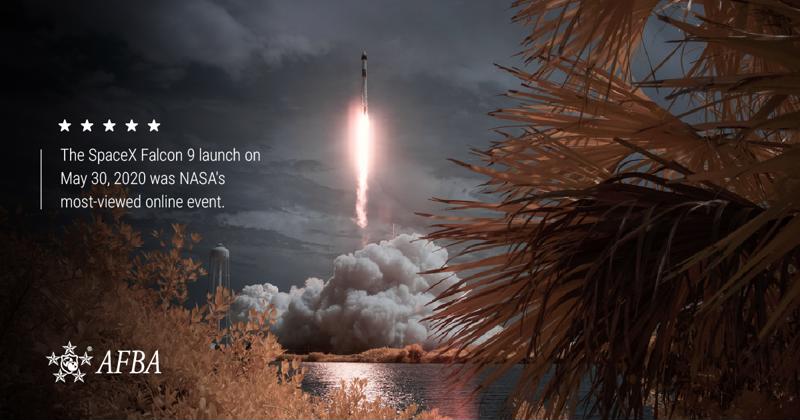NASA’s SpaceX Falcon 9 launch on May 30, 2020, drew a significant amount of attention. With roughly 10.3 million people streaming the coverage at peak viewership, the event has become NASA’s most-viewed online event.
While astronauts Bob Behnken and Doug Hurley prepared for their journey inside the SpaceX Crew Dragon capsule to the International Space Station, all eyes were on their futuristic apparel. Here, we’re exploring the inspiration, design development and engineering behind the new spacesuits worn by the Dragon crew during the recent launch.
 “The appearance of U.S. Department of Defense (DoD) visual information does not imply or constitute DoD endorsement.”
“The appearance of U.S. Department of Defense (DoD) visual information does not imply or constitute DoD endorsement.”A new mission symbol
“This [SpaceX] suit is significantly different than the suit we wore on shuttle,” Hurley said during a prelaunch press conference. While participating in earlier NASA space shuttle flights, he previously wore what’s been called the “pumpkin suit” due to its bulky, bright orange appearance.
Behnken noted that SpaceX’s idea was to “reach back and [bring forth] a retro styling or a different way of creating their own unique kind of mission symbol [rather than] copy what was done on the space shuttle side.”
Comparing the pumpkin suit to the sleek new design, Behnken added, “Both of [the suits] have succeeded, I think, in terms of becoming iconic [and] symbolizing the mission in front of us, and the excitement associated with what we’re going to accomplish.”
Superhero suits for space
The iconic new suits were dreamt up by Hollywood costume designer Jose Fernandez, who has designed superhero costumes for films including “The Avengers,” “The Fantastic Four,” “Batman v Superman” and “X-Men II.”
According to an article in The New York Times, “Elon Musk’s SpaceX Suit Is Like a Tuxedo for the Starship Enterprise,” SpaceX founder Musk approached Fernandez and other designers rather than the usual military uniform contractors. Together they fine-tuned the design and then had experts reverse-engineer it to work for the spaceflight setting.
The shape and style of the articulated, structured suits were partly inspired by the tuxedo, a garment that makes its wearer look instantly better by offering padded shoulders and tapered seams that visually sculpt a more muscular-looking torso.
Additionally, the suits recall the futuristic fashions of the 1960s, when, inspired by the sleek Space Age aesthetic, couture designers dressed models in ultra-cool ensembles featuring clean lines, minimalist detailing and lots of white and silver.
Wearable tech in orbit
Even though the spacesuit creators reached back into the canon of visual culture and design history to determine its appearance, the cutting-edge technology and engineering the design represents — as well as the new era of privatized space travel — are incredibly forward-looking.
While they are not intended for lunar walks, NASA explained that the custom-made suits were “designed to be functional, lightweight, and to offer protection from potential depressurization. A single connection point on the suit’s thigh attaches life support systems, including air and power connections.” The custom 3D-printed helmets include similar integrated technologies and microphones.
Scientific American has reported that this new “public-private partnership business model” has saved NASA up to $30 billion on directing contractors to develop new spacecraft and related technologies. The arrangement also allows aesthetics to take center stage.
“As long as space travel was being subsidized by governments, there was no need to make the suits attractive, as the astronauts’ safety was the sole concern,” sci-fi scholar Gary Westfahl told The New York Times. “Yet, if space travel is going to become an activity of private companies seeking profits, they have a natural interest in making their astronauts seem attractive.”
The spacesuits represent a novel hybrid of past and present, fashion and function — and they demonstrate all the best in wearable technology. As Cathleen Lewis, curator of spacesuits at the Smithsonian Institution’s National Air and Space Museum, said in The New York Times, “It’s smart branding because it signals we are starting a new age.”


